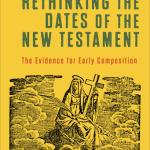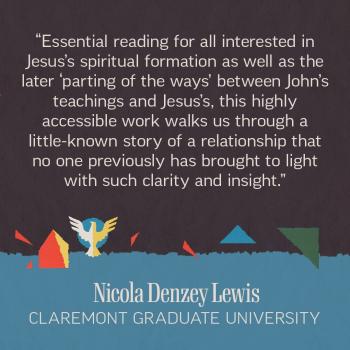The New Testament was written by men living in a patriarchal age that tended to discount the role of women in society. Nevertheless, the presence of women is acknowledged, and this provides a hint that their role may have been more significant than portrayed. If Jesus was truly human he needed to learn about his world from those he encountered in everyday life, and that included women.
James F. McGrath explores the role women played in the life of Jesus by employing a methodology that uses both historical and literary resources. This combination provides the means to fill in gaps that historical study by itself cannot penetrate. He engages the “exegesis of silence” that uses imagination combined with a thorough knowledge of history, skill of storytelling, and tools of historical fiction to describe an environment close to the way it really was.
The author, James F. McGrath, is a fully credentialed scholar of New Testament studies and is conversant in the world of critical Biblical studies. Consequently I feel some comfort with the narrative he has provided in this book. It gave me a perspective on the first century life surrounding Jesus that added new color to some old familiar Biblical stories.
He begins each of ten chapters with a narrative in the first person voice of the particular woman being presented. These beginning segments describe the individual’s personality and her environment in a manner typical of historical fiction. After filling approximately 2 to 3 pages the book’s narrative switches to the voice of the author in which he explains the evidence and history behind his choice of things included in the first person narrative. These explanatory portions of the chapter are much longer and take up to 20 pages which are then followed with a host of footnotes. An extensive bibliography is included at the end of the book.
I was motivated to read this book because of a post on Bart Ehrman’s blog in which the author describes the chapter in his book about Joanna. His suggestion that the Joanna described in Luke 8:1-3 is the same person as Junia referenced in Romans 16:7 is an idea I find very intriguing. After reading the full explanation provided in this book I’m even more persuaded that is could possibly be true. One of the things I like about the proposed scenario is that it explains why the Apostle Paul went to “Arabia” for several years after his conversion.
I’m grateful for him sharing these thoughts. The chapter about Joanna/Junia is the one I describe as “the chapter I never expected to write.” If you haven’t read my guest post on Bart Ehrman’s blog you can find it here. Hopefully it will make you want to read the full argument I offer in What Jesus Learned from Women if you haven’t already. It is also the chapter that means that people whose primary interest in Paul the apostle rather than the historical Jesus or the Gospels really ought to read my book, at the very least that chapter.














